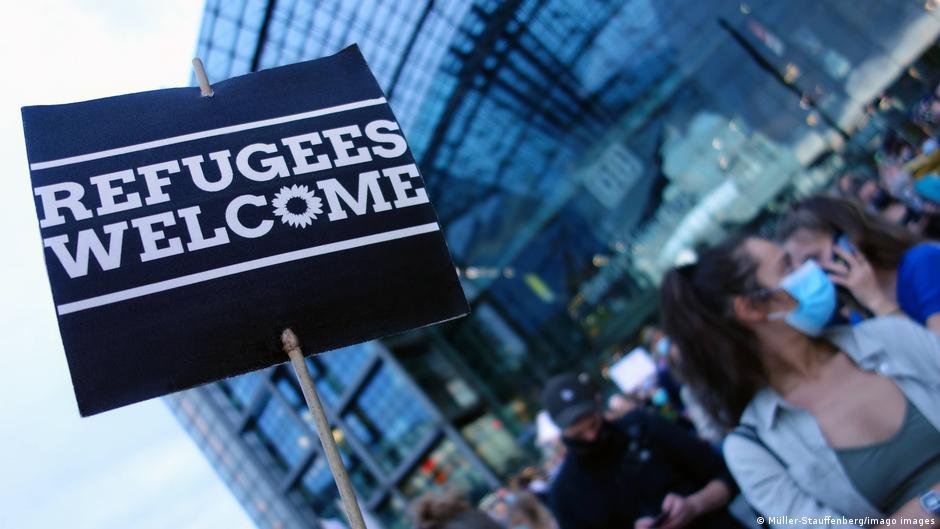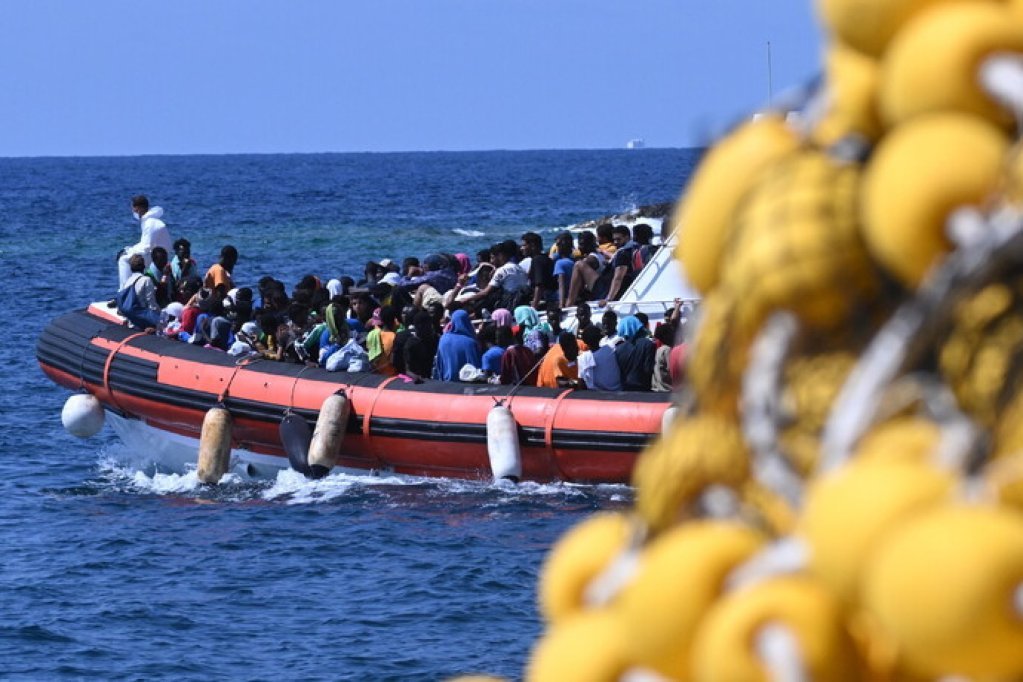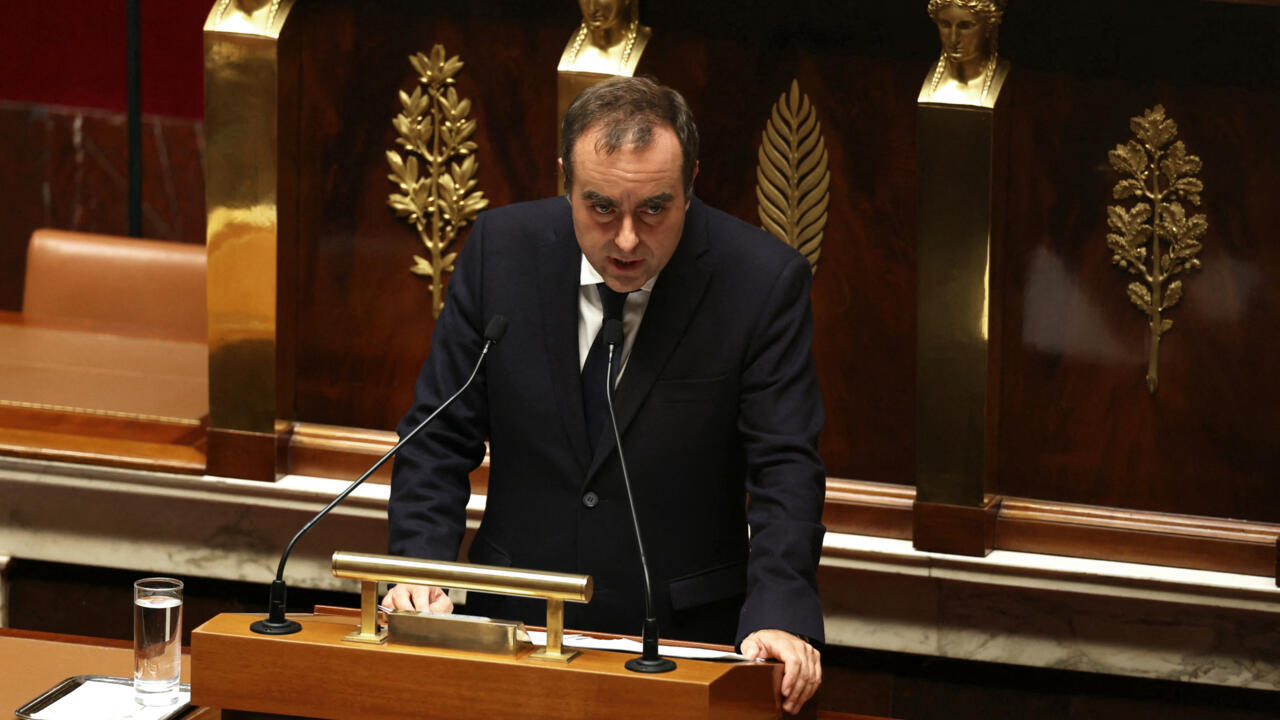Poland to be exempt from EU solidarity deal, as future of migration pact hangs in balance
Source: InfoMigrants: reliable and verified news for migrants – InfoMigrants
With less than 12 months to go until the rollout of the EU’s new migration pact is due to be completed, multiple roadblocks are putting at risk not only the timely implementation of the deal but also the broader principle of EU solidarity itself. As talks are underway in Luxembourg, some EU members have announced they are not supporting the relocation mechanism, a central part of the pact.
The clock is ticking: Before the end of 2025, the EU is supposed to have relocated at least 30,000 asylum seekers from frontline states suffering migratory pressures to other parts of the bloc as part of the so-called “solidarity mechanism” which is enshrined in the bloc’s New Pact on Migration and Asylum.
The pact, which was adopted last year and is due to be fully implemented by mid-2026, is designed to alleviate the pressure that states such as Greece and Italy continue to face, with migration movements from North Africa and the Middle East continuing to pose humanitarian, logistical and financial challenges.
The new mechanism dictates that other member states will have to help out, either by transferring and taking in asylum seekers from countries facing severe strain themselves, or by paying 20,000 euros per person that continues to be hosted in the original states.
The scheme focuses on relocating at least 30,000 asylum seekers per year, though more people could be transferred in case there are major changes in migration patterns across the bloc.
Read Also
Do Europe’s restrictive migration policies really work? And at what cost?
Several EU states unhappy with current blueprint
Many EU members, however, are more than reluctant to pull their weight.
With a little over two months to go until the first attempt at applying this new regimen with the initial cohort of 30,000 asylum seekers, there appears to be hardly any progress.
Not only is no EU country stepping forward voluntarily to get the ball rolling on accepting at least some of those 30,000 individuals; several member states have also announced that they will seek to be exempted from partaking in the deal after all.

Poland was the first country to announce that it would not accept any relocated asylum seekers on its territory, while also refusing to pay its way out of the deal.
Belgium, Sweden and Austria also said that they would not be hosting any migrants, without explicitly saying however that paying the cost of 20,000 euros per allocated migrant was off the table.
Several months ago, Hungary had also rejected the current blueprint for the solidarity mechanism, going as far as referring to the scheme as “Brussels’ blackmailing and threats,” adding that it went against national interests while alleging that across the EU, there was no support for it among the majority of national electorates.
As interior ministers of the 27 member states are currently meeting in Luxembourg to iron out further details.
Read Also
Poland: Government pushes forward on stricter migration measures
The definition of ‘migratory pressure’
Chiefly, there appears to be ongoing division among the ministers in Luxembourg in establishing a legally binding definition of what would constitute an EU member state that is facing “migratory pressure.”
The criteria to identify such states will include the number of irregular arrivals and the relative role this place to the population size of any given EU country; however, that definition process is dragging out, as it is not easy to find a definition that fits all categories and countries.
Cyprus, for instance, has faced large numbers of arrivals relative to its population size for years, but could, on account of being located at the very eastern end of the bloc, emerge as a strong partner in the expulsion of failed asylum seekers across the bloc.

Originally, this part of negotiations was slated to have been completed by now, with EU commissioner Magnus Brunner expressing hope that within a “couple of days,” this might still be achieved despite overt differences — especially among eastern EU members — on this issue.
Several further rounds of talks are expected to take place before the wording of the deal — and the EU report associated with this — is finalized.
Read Also
EU seeks to accelerate return of migrants
Poland granted exemption for taking in several million Ukrainians
Member States are eagerly waiting for this final report, as it will not only identify the countries facing the highest strain of migrant arrivals but also address many other outstanding questions on how individual EU members are expected to respond and in what exact ways to the implementation of this solidarity deal.
Among other issues, it is not clear yet whether each member state will be allocated an annual share of migrants to either accept or pay for, or whether this will be assessed on a rolling basis.
For example, in a report on Poland’s public broadcaster TVP, Polish Interior Minister Marcin Kierwinski announced already that he had achieved an exemption for Poland from any relocation mechanism on account of already struggling with hosting large numbers of Ukrainian war refugees — in addition to ongoing threats and migratory challenges along its border with Belarus.
“When it comes to the costs we incur to protect the eastern border of the EU, we expect support from all European Union countries,” he later added on X, stressing that Poland had stopped over 27,000 irregular entries along its border with Belarus so far this year alone.
Kierwinski also added that a resolution within days on all the talking was unlikely, highlighting that more details would only fully emerge by the end of October, before the meeting of all EU leaders at the European Council.
Meanwhile, Belgium’s Minister of Asylum and Migration, Anneleen van Bossuyt, also shared that from the get-go, her country would “choose a financial contribution because our reception centers are full.”
Van Bossuyt stressed that working with other EU leaders to effectively lower irregular migration was her primary objective during the talks in Luxembourg.
Read Also
Belgium links prison-overcrowding plan to wider migration strategy
Differing views on migrant return hubs
Another question that remains to be addressed is how failed asylum seekers will be handled.
As part of the pact, the EU also agreed deportations will be handled more thoroughly in the future, hoping to improve on the existing track record of only about 20 percent of rejected asylum seeker in the EU actually being returned to their home countries (or in rare instances, sent to a third country outside the bloc).
Some member states — such as France — have proposed that EU members should mutually recognize asylum rejections and therefore the ensuing responsibility to deport people, but other countries fear that this could result in unjust decisions.
The interior ministers gathered in Luxembourg are keen to prioritize resolving this issue rather than discussing how the first group of 30,000 asylum seekers will be dealt with before the end of 2025.
In particular, some of the ministers are keen to move forward with proposals floated under the pact that EU member states could in future be allowed to open centralized “return hubs” situated outside to bloc to process rejected asylum seekers.
Read Also
Council of Europe warns against third-country asylum deals
But with these “return hubs,” there also are lingering questions on what individual members will and will not be allowed to do, such as who will get to decide where these hubs could be built, and whether the indefinite housing of failed asylum seekers who cannot be returned to their home countries will be permitted at such facilities.
Read Also
Migrant offshoring: the EU’s plan to deport more rejected asylum seekers under scrutiny
with AFP, dpa
The original article: belongs to InfoMigrants: reliable and verified news for migrants – InfoMigrants .




